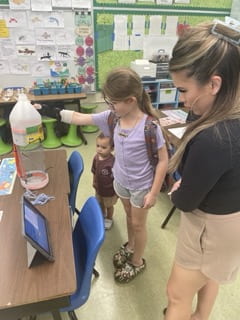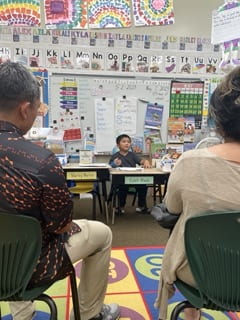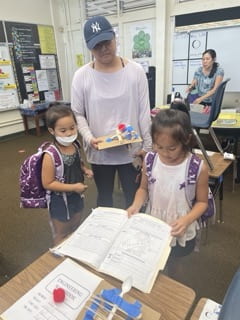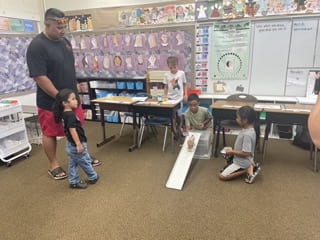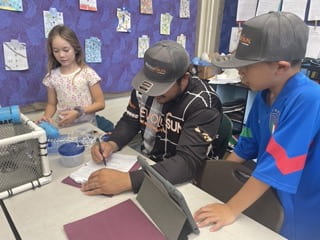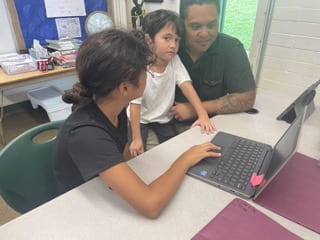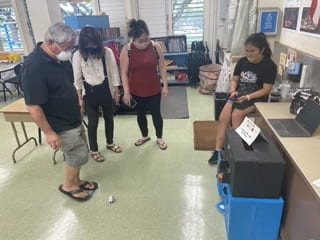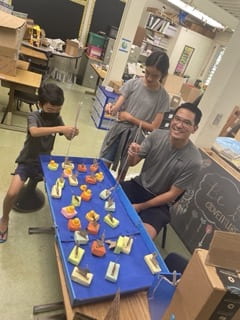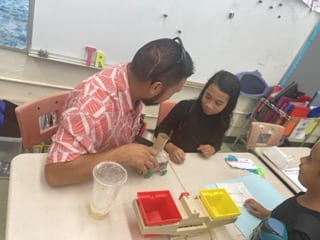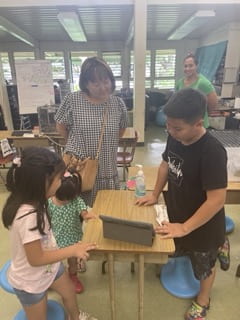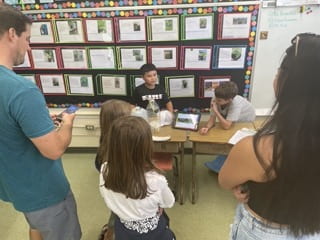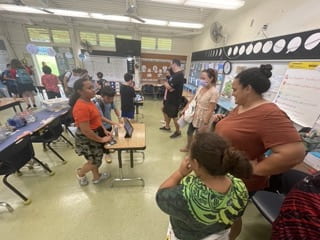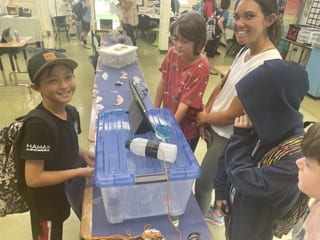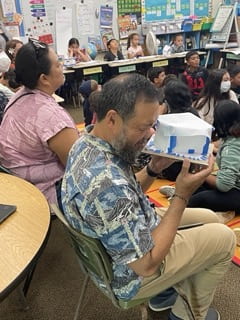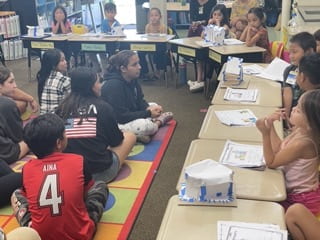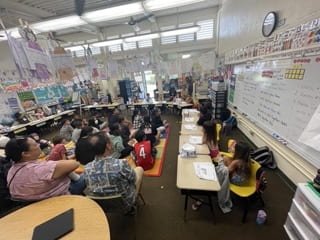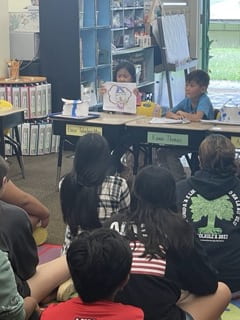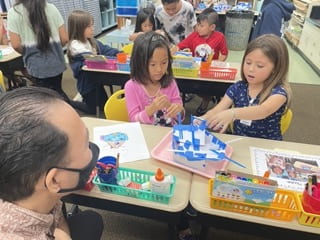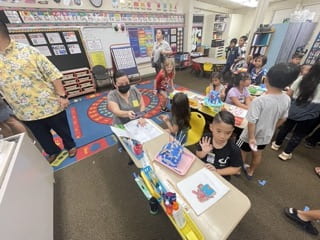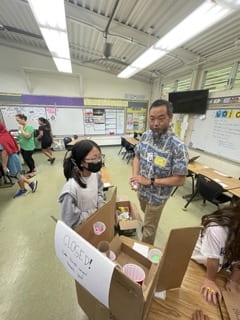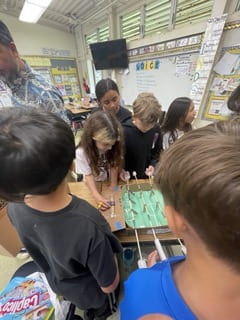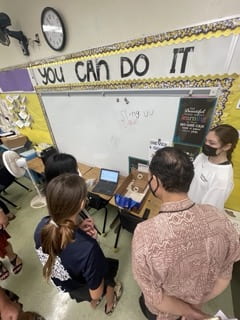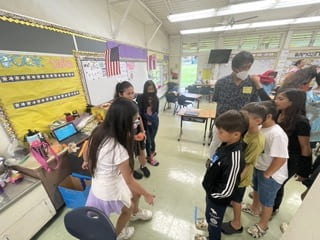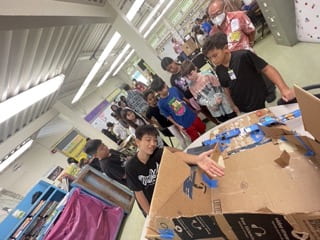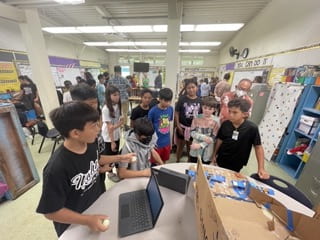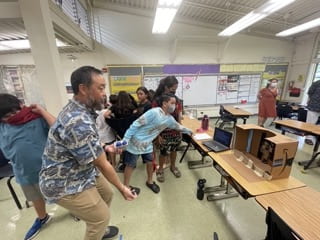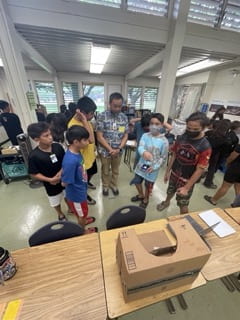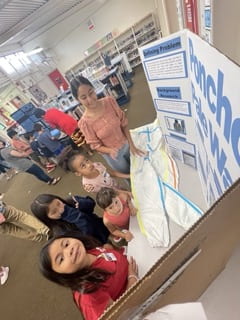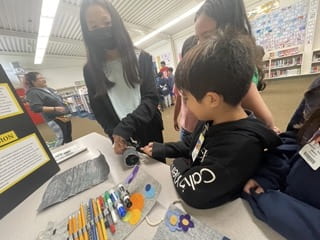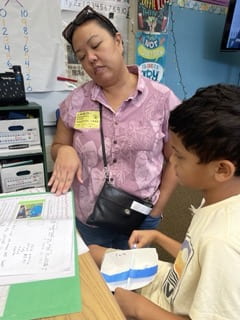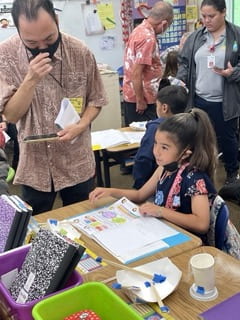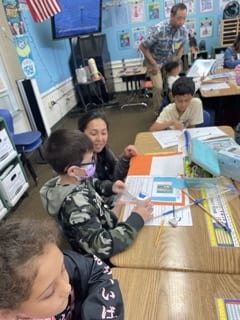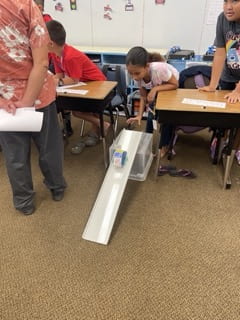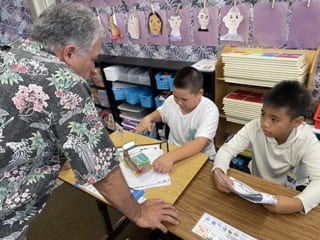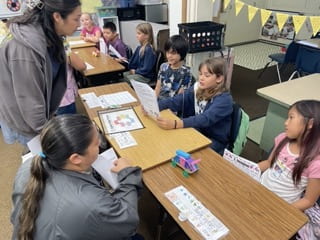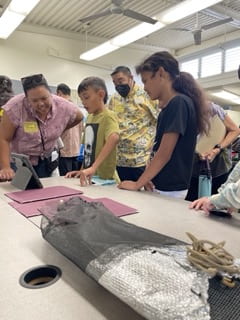Aka, with, care, and hai, to speak. To be tender of heart; meek
Andrews, Hawaiian Dictionary, 1865
ALOHA FOCUS FOR THE WEEK: AKAHAI
Fifteen percent – Out of the 570 students that presented their engineering design projects last week Friday, I predict 15% will go on to pursue a career in engineering. I might be way off and probably a bit optimistic but currently only 5% of students across the nation enroll in engineering degree programs. So, why dedicate an entire day to celebrating engineering, not to mention the engineering field day we had earlier in the year? Three reasons:
- Part of our mission is to inspire students to discover their passions. Who knows what amazing learning experiences our teachers design will provide that spark? So we expose students to as many diverse, engaging, and stimulating experiences that we can, including engineering;
- According to the Georgetown Center on Education and the Workforce, engineering is one of the occupations that will be in the highest demand in the future. Hence, it is prudent to build students’ awareness that they might be an awesome, much needed engineer in the future; and
- Most importantly, the Engineering Design Process aligns with our efforts to cultivate a Growth Mindset in our students. Built into the process is failing and making mistakes. Students continually test and improve upon their failures, learning what works, and how to come up with a better solution.
Thinking like an engineer means to accept one’s mistakes, understand that it is naturally a part of the problem-solving process. It is a way to show grace, AKAHAI, to ourselves. Too often, we home in on the tiny foibles, allowing them to overshadow our successes and lessons learned. For example, when I coached basketball, pre-Growth Mindset, I would get down on every error, turnover, and mindless foul our players made. We were never good enough, even when we won. I overlooked the plays we did well because our mistakes seemed more glaring. I wish I had the engineer’s mindset and shown AKAHAI to our players and myself. Sure, we tried to improve upon those mistakes, but our effort and the results were diminished because we felt so imperfect. Never mind learning from our successes either.
An engineering mindset, would have allowed our players and me to embrace our mistakes and understand that it’s an inherent part of learning the sport. We would have viewed our errors and successes as data for our improvement – not as character flaws and serendipitous happenstances. In turn, an engineering mindset would have improved our effort and motivation.
During the morning of our STEM Hōʻike, students visited other classes and heard from those younger and older how they applied the engineering design process to a different problem. Sixth graders heard kindergarteners introduce themselves as engineers and describe how they iterated to keep their paper houses from being blown down by the Big Bad Wolf. First graders saw how 4th graders designed traps to rid our streams of invasive species so native fish can once again thrive. While many students had yet to achieve success with their prototypes, their efforts and lessons learned were celebrated. Students also saw how this universal process grounded our school and strengthened overtime. Regardless if they become engineers, all developed a mindset that we can learn and always get better.
To show AKAHAI,
- Accept our mistakes as natural and expected;
- Reflect and strive to learn from mistakes and successes alike; and
- Accept the mistakes others make and show them grace.
5 PURSUITS of AKAHAI:
Inspired by Gholdy Muhammad
Please watch this: The Book of Mistakes written, illustrated by Corinna LuykenThen with you child, answer the following:
IDENTITY: Describe a time when you improved upon a mistake and experienced an outcome better than you initially expected.
SKILLS: Explain why you think the author wrote this story? Provide examples from the book.
INTELLECT: Ever hear the phrase, ”The real McCoy?” Watch this video about Elijah McCoy, a former slave turned engineer who’s invention built upon the mistakes he encountered and revolutionized the railroad industry.
CRITICALITY: If you hear a classmate making fun of someone for making a mistake, what can you do?
JOY: Start a drawing. Then drop a dot of ink/paint onto the drawing or make a big mark in the middle with a marker. Take that “mistake” and add to or change their piece to create something new out of it.
SBA TESTING
We continue our Smarter Balanced Assessment (SBA) testing this week and through May 19, 2023. Please ensure your child
- has a good nightʻs rest;
- eats a healthy breakfast;
- bring their headphones to school; and
- is on time for school.
Tardy students cannot take the SBA on the day they are tardy.
During this time period, we will also cancel our daily piko on testing days.
UPCOMING EVENTS
| Mon, May 1, 2023 | Waiver Day – No Students |
| Sat, May 13, 2023 | Campus Beautification #2 |
| Apr 25 – May 19, 2023 | Smarter Balance Testing |
| Thur, May 25, 2023 | 6th Grade Promotion Ceremony |
| Fri, May 26, 2023 | Awards Ceremony Last day of school |
